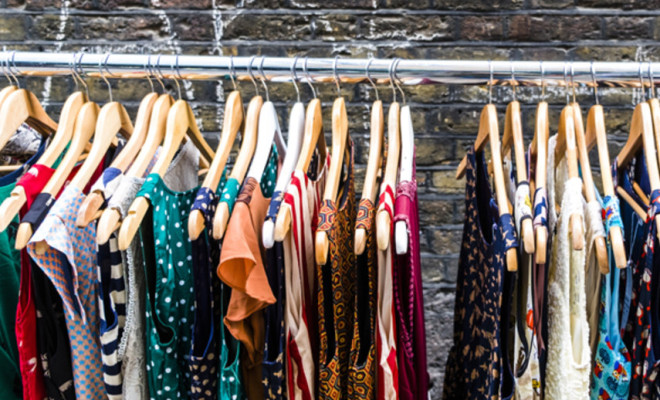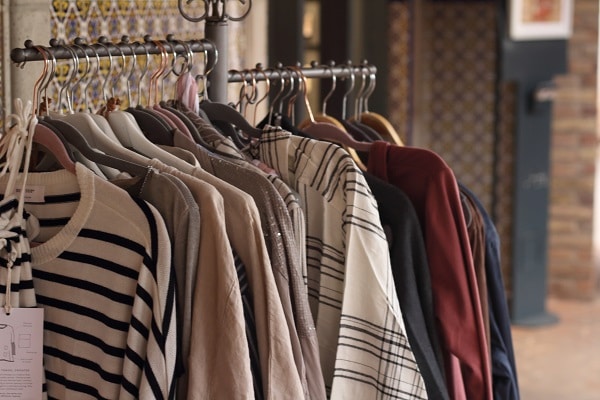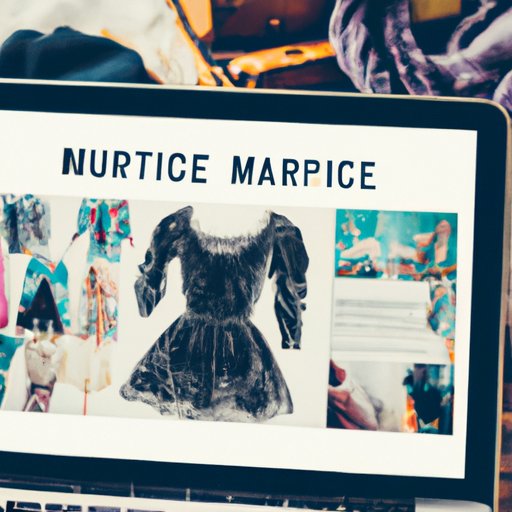Why Selling Old Clothes is a Great Idea
Selling old clothes is a great way to declutter your closet, make some extra cash, and reduce waste. In recent years, the demand for sustainable fashion has grown significantly, with more consumers opting for second-hand shopping as a way to reduce their environmental footprint. According to the United Nations, the fashion industry is responsible for around 10% of global greenhouse gas emissions, making it one of the largest polluters in the world. By selling old clothes, individuals can play a small part in reducing this waste and promoting a more circular economy.
In addition to the environmental benefits, selling old clothes can also be a lucrative venture. With the rise of online marketplaces and social media platforms, it’s easier than ever to connect with potential buyers and sell unwanted items. Whether you’re looking to make some extra cash for a special occasion or simply want to clear out some space in your closet, selling old clothes is a great way to achieve your goals.
When considering where to sell old clothes, it’s essential to think about the types of items you have to sell and the target audience you’re trying to reach. For example, if you have high-end or designer items, you may want to consider selling them through a consignment shop or online marketplace that specializes in luxury goods. On the other hand, if you have more casual or everyday items, you may want to consider selling them through a local thrift store or online platform like eBay or Poshmark.
Ultimately, selling old clothes is a great way to give your unwanted items a new life, make some extra cash, and promote sustainable fashion practices. By considering your options carefully and choosing the right platform for your items, you can ensure a successful and stress-free selling experience.
How to Prepare Your Old Clothes for Sale
Before listing your old clothes for sale, it’s essential to prepare them to attract potential buyers. This involves cleaning, ironing, and taking good photos to showcase the items in the best possible light. Accurate descriptions and pricing are also crucial to ensure a smooth and successful transaction.
Cleaning and ironing your old clothes can make a significant difference in their appearance and appeal. Remove any stains or odors, and iron out wrinkles to make the items look fresh and presentable. Consider using a steamer or a fabric refresher to give your clothes a professional finish.
When taking photos, use good lighting and a clean background to showcase the items clearly. Consider using a mannequin or a model to display the clothes, especially if you’re selling high-end or designer items. Make sure to take photos from different angles, including the front, back, and sides, to give buyers a comprehensive view of the item.
Accurate descriptions are vital to ensure that buyers know exactly what they’re getting. Include details such as the material, size, condition, and any flaws or defects. Be honest and transparent about the item’s condition, and provide measurements to ensure a good fit.
Pricing is also critical to attract buyers and ensure a successful sale. Research similar items online to determine a fair and competitive price. Consider the original price, the condition, and the rarity of the item when setting your price. Keep in mind that you want to make a profit, but you also want to attract buyers and sell your items quickly.
By preparing your old clothes for sale, you can increase their appeal and attract more buyers. Remember to clean, iron, and take good photos, and provide accurate descriptions and pricing to ensure a smooth and successful transaction. Whether you’re selling online or in-person, these tips can help you get the best possible price for your old clothes and make the selling process easier and more efficient.
Popular Platforms for Selling Old Clothes
When it comes to selling old clothes, there are several popular online platforms to consider. Each platform has its own fees, target audience, and specific requirements or restrictions, so it’s essential to choose the one that best fits your needs.
eBay is one of the most well-established online marketplaces for buying and selling second-hand items, including clothing. With over 183 million active users, eBay offers a vast potential customer base. However, it’s essential to note that eBay charges a listing fee, as well as a final value fee, which ranges from 8% to 12.5% of the sale price.
Poshmark is another popular platform for selling old clothes, with a strong focus on social media and community engagement. Poshmark charges a flat fee of $2.95 for items under $15, and 20% of the sale price for items over $15. ThredUp is a consignment store that specializes in gently used women’s and children’s clothing. ThredUp charges a commission fee, which ranges from 10% to 80% of the sale price, depending on the item’s price and category.
When choosing a platform, consider the type of items you’re selling, the target audience, and the fees associated with each platform. For example, if you’re selling high-end or designer items, you may want to consider eBay or ThredUp. If you’re selling more casual or everyday items, Poshmark or other social media-focused platforms may be a better fit.
Regardless of the platform you choose, make sure to read and understand the terms and conditions, including any fees, commissions, and restrictions. By doing your research and choosing the right platform, you can increase your chances of selling your old clothes quickly and efficiently.
The Best Apps for Selling Second-Hand Fashion
When it comes to selling old clothes, there are several apps that can help you reach a wider audience and make the process more efficient. Here are some of the best apps for selling second-hand fashion:
Depop is a popular app for selling second-hand clothes, with a strong focus on social media and community engagement. With over 15 million active users, Depop offers a vast potential customer base. The app charges a flat fee of 10% on sales, and offers features such as shipping labels and packaging materials.
Letgo is another popular app for selling second-hand items, including clothes. With over 100 million downloads, Letgo offers a large user base and a wide range of features, including shipping labels and packaging materials. The app charges a flat fee of 10% on sales.
Mercari is a mobile marketplace for buying and selling second-hand items, including clothes. With over 10 million active users, Mercari offers a large user base and a wide range of features, including shipping labels and packaging materials. The app charges a flat fee of 10% on sales.
When using these apps, make sure to read and understand the terms and conditions, including any fees, commissions, and restrictions. By doing your research and choosing the right app, you can increase your chances of selling your old clothes quickly and efficiently.
Some notable success stories on these apps include sellers who have made thousands of dollars by selling their gently used clothes. For example, one seller on Depop made over $10,000 by selling her designer handbags and shoes. Another seller on Letgo made over $5,000 by selling his gently used electronics.
By using these apps and following some simple tips and strategies, you can also achieve success and make some extra cash by selling your old clothes.
Consignment Shops and Local Marketplaces
Selling old clothes through consignment shops and local marketplaces is another option to consider. Consignment shops typically take a commission on the sale price of the item, but they handle the sales process and provide a physical storefront for your items. Local marketplaces, such as flea markets or swap meets, offer a platform for selling items in person.
One of the benefits of selling through consignment shops and local marketplaces is the ability to negotiate prices and connect with customers in person. This can be especially helpful for sellers who want to get a better sense of the market demand for their items and adjust their prices accordingly.
Consignment shops often specialize in specific types of items, such as designer clothing or vintage accessories. Research local consignment shops in your area to find ones that align with the types of items you want to sell. Be sure to read and understand the consignment agreement, including the commission rate and any fees associated with the sale.
Local marketplaces, such as flea markets or swap meets, offer a platform for selling items in person. These events can be a great way to connect with customers and get a sense of the market demand for your items. Be sure to research the event and understand the rules and regulations, including any fees associated with selling.
Some popular local marketplaces for selling old clothes include thrift stores, vintage shops, and second-hand boutiques. These types of stores often have a loyal customer base and can provide a platform for selling items that may not be suitable for online marketplaces.
When selling through consignment shops and local marketplaces, be sure to provide accurate and detailed descriptions of your items, including measurements, materials, and condition. This will help attract potential buyers and ensure a smooth sales process.
Tips for Taking Great Photos and Writing Compelling Descriptions
When selling old clothes, high-quality photos and compelling descriptions are crucial to attracting potential buyers. Here are some tips to help you take great photos and write effective descriptions:
Lighting is essential for taking good photos. Natural light is always the best option, so try to take photos near a window or outside during the golden hour. Avoid using flash or artificial light, as it can create harsh shadows and unflattering colors.
Styling is also important for creating visually appealing photos. Consider using a mannequin or a model to display the clothes, and add some props such as accessories or shoes to create a lifestyle scene. Make sure the clothes are clean and ironed, and consider steaming or pressing them to remove wrinkles.
Editing is also a crucial step in creating high-quality photos. Use photo editing software to adjust the brightness, contrast, and saturation of the photos, and consider adding text or graphics to highlight the features of the clothes.
When writing descriptions, be sure to include accurate and detailed information about the clothes, including measurements, materials, and condition. Consider adding a brief description of the style and era of the clothes, as well as any notable features or flaws.
Use keywords and phrases that buyers might use when searching for similar items, and make sure to include the brand name and any relevant certifications or labels. Consider adding a call-to-action, such as “Make an offer” or “Buy now,” to encourage buyers to take action.
Some popular photo editing software for editing photos of old clothes includes Adobe Lightroom, Photoshop, and Canva. Consider using a tripod or a photo studio to take high-quality photos, and invest in a good camera or smartphone with a high-quality camera.
By following these tips, you can create high-quality photos and compelling descriptions that will help you sell your old clothes quickly and efficiently.
How to Price Your Old Clothes for Sale
Pricing your old clothes competitively is crucial to attracting potential buyers and selling your items quickly. Here are some tips to help you price your old clothes effectively:
Research similar items: Look for similar items on online marketplaces, such as eBay, Poshmark, and ThredUp, to determine the average price range for your item. Consider the condition, rarity, and brand of the item when researching similar items.
Consider the condition: The condition of your item plays a significant role in determining its price. Consider the item’s wear and tear, any stains or damage, and whether it’s still in its original packaging.
Factor in fees and commissions: When pricing your item, factor in any fees or commissions that you’ll need to pay to the platform or marketplace. This will help you determine the minimum price you need to charge to break even.
Be competitive: Price your item competitively to attract potential buyers. Consider offering discounts or promotions to incentivize buyers to purchase your item.
Use pricing guides: Utilize pricing guides, such as those provided by eBay or Poshmark, to help you determine the optimal price for your item. These guides can provide valuable insights into the market demand for your item and help you price it competitively.
Keep in mind that pricing is an art, and it may take some trial and error to find the right price for your item. Be prepared to adjust your price based on buyer feedback and market demand.
Some popular pricing guides for old clothes include the eBay Pricing Guide and the Poshmark Pricing Guide. These guides provide valuable insights into the market demand for your item and can help you price it competitively.
Maximizing Your Earnings and Minimizing Hassle
When selling old clothes, maximizing your earnings and minimizing hassle is crucial to a successful and stress-free experience. Here are some strategies to help you achieve this:
Bundling items: Consider bundling multiple items together to attract more buyers and increase your earnings. This can be especially effective for similar items, such as a collection of vintage t-shirts or a set of designer handbags.
Offering discounts: Offering discounts or promotions can incentivize buyers to purchase your items and increase your earnings. Consider offering a discount for bulk purchases or for buyers who purchase multiple items at once.
Using shipping labels and packaging materials efficiently: Using shipping labels and packaging materials efficiently can help minimize hassle and reduce costs. Consider using pre-paid shipping labels and packaging materials specifically designed for shipping clothing.
Providing excellent customer service: Providing excellent customer service is crucial to building trust with buyers and increasing your earnings. Consider responding promptly to buyer inquiries, providing detailed descriptions of your items, and offering refunds or exchanges when necessary.
Utilizing social media: Utilizing social media can help you reach a wider audience and increase your earnings. Consider posting high-quality photos of your items on platforms like Instagram and Facebook, and using relevant hashtags to attract buyers.
By implementing these strategies, you can maximize your earnings and minimize hassle when selling old clothes. Remember to stay organized, provide excellent customer service, and utilize social media to reach a wider audience.






